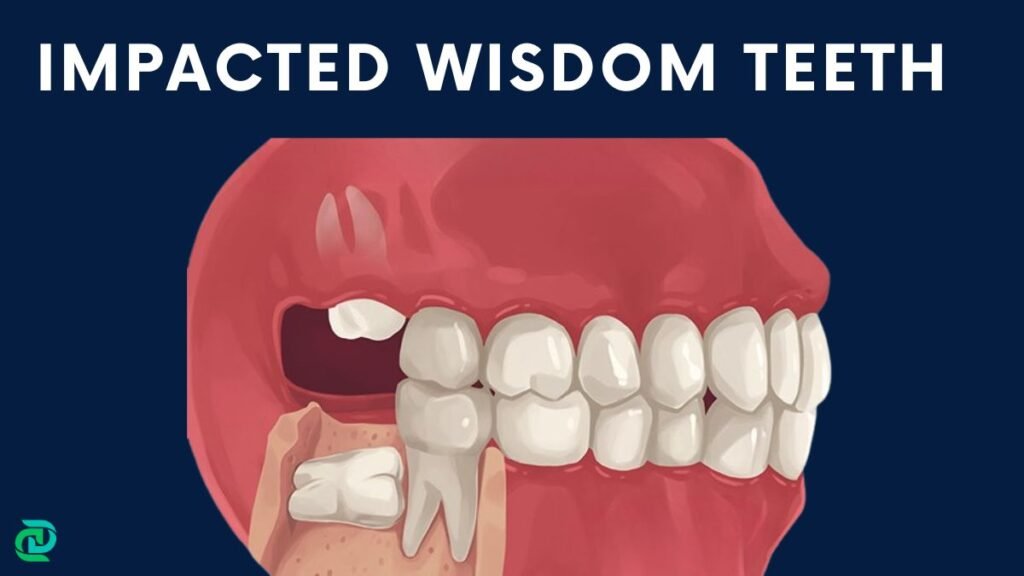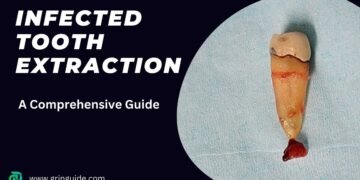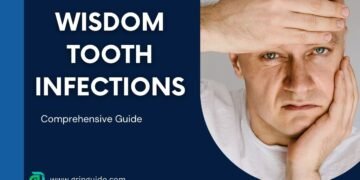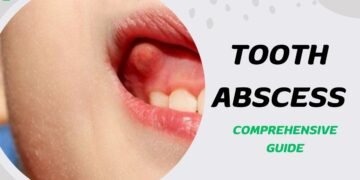Table of Contents
Introduction to Tooth and Jaw Pain
Tooth pain in the jaw is a prevalent issue that many individuals encounter at various points in their lives. This discomfort can be attributed to a myriad of causes, ranging from dental cavities to more complex conditions such as temporomandibular joint disorders (TMJ). The pain is often characterized by a dull ache or sharp, stabbing sensations that can significantly disrupt daily activities, making simple tasks such as eating and speaking challenging. Moreover, the persistent nature of tooth pain in the jaw can adversely affect overall well-being, leading to stress and reduced quality of life.
Understanding the root causes of this pain is essential for effective management and treatment. In this blog post, we will delve into the common causes of tooth pain in the jaw, including dental problems, infections, and jaw-related disorders. We will also explore the symptoms associated with each cause, helping you to identify potential issues early. Additionally, we will discuss various diagnostic methods that healthcare professionals use to pinpoint the exact source of the pain.
Furthermore, the blog will provide an overview of both conventional and alternative treatment options available for managing tooth pain in the jaw. From over-the-counter pain relief medications to advanced dental procedures, we will cover a spectrum of solutions to help alleviate discomfort. Finally, we will offer preventive measures and tips to maintain optimal oral health, potentially reducing the risk of experiencing tooth pain in the jaw in the future.
By the end of this comprehensive guide, readers will have a thorough understanding of the intricacies of tooth pain in the jaw and be equipped with practical knowledge to address and prevent this common yet disruptive condition.
Common Causes of Tooth Pain in the Jaw
Tooth pain in the jaw can be attributed to a variety of dental and medical conditions. Understanding these causes is crucial for effective treatment and management.
One of the most prevalent reasons is dental cavities. When tooth decay penetrates deep into the tooth’s structure, it can reach the pulp, causing significant pain that often radiates to the jaw.
Gum disease, another common culprit, involves the inflammation and infection of the gums. As the condition progresses, it can lead to periodontitis, where the inflammation extends to the jawbone, resulting in discomfort and pain in the jaw area. Identifying and treating gum disease early is essential to prevent this escalation.
A tooth abscess, characterized by a pocket of pus caused by bacterial infection, can also lead to severe tooth pain in the jaw. The infection can spread from the tooth to the jawbone, causing intense pain and swelling. Immediate medical attention is required to drain the abscess and treat the infection.

Bruxism, or teeth grinding, is another significant cause. Constant grinding and clenching of teeth exert excessive pressure on the jaw muscles and joints, leading to chronic pain and discomfort. This condition often occurs during sleep, making it challenging to diagnose without professional help.
Impacted wisdom teeth, the last set of molars that emerge in late adolescence or early adulthood, can cause substantial pain if they do not have enough space to grow properly. This can lead to pressure on adjacent teeth and jaw pain. In some cases, surgical removal of the impacted teeth may be necessary.

Identifying the root cause of tooth pain in the jaw is vital for effective treatment. Consulting with a dental professional can provide a comprehensive diagnosis and an appropriate treatment plan tailored to address the underlying issue, thereby alleviating pain and preventing further complications.
Tooth Pain in the Jaw: Immediate Relief Tips
Experiencing tooth pain in the jaw can be quite distressing and often necessitates immediate measures to alleviate discomfort before professional dental care is accessible. Fortunately, several home remedies can provide temporary relief from tooth pain in the jaw.
One of the most accessible solutions is the use of over-the-counter pain relievers. Medications such as ibuprofen or acetaminophen can effectively reduce pain and inflammation. It is crucial to follow the dosage instructions provided on the medication packaging to ensure safe usage.
Applying a cold compress to the affected area can also offer significant relief. The cold helps to numb the pain and reduce swelling. To apply a cold compress, wrap a few ice cubes in a cloth or use a cold pack and place it on the outside of the jaw where the pain is localized. Keep the compress on for about 15 minutes at a time, allowing intervals in between to avoid skin damage.
Another simple yet effective remedy is a saltwater rinse. Mixing a teaspoon of salt in a glass of warm water and rinsing your mouth with this solution can help to cleanse the area around the painful tooth and reduce inflammation. The saltwater acts as a natural disinfectant, helping to alleviate discomfort and prevent infection.
While these home remedies can provide temporary relief from tooth pain in the jaw, it is important to remember that they are not permanent solutions. Persistent or severe pain may indicate underlying dental issues that require professional evaluation and treatment. Therefore, seeking prompt attention from a dentist is essential to address the root cause of the pain and prevent further complications.
Connection Between Tooth Pain in the Jaw and Ear
Tooth pain in the jaw is often more complex than it initially appears, extending beyond the local area to cause discomfort in the ear. This phenomenon is primarily due to shared nerve pathways. The trigeminal nerve, which supplies sensation to the jaw and teeth, also has branches that communicate with the ear. Consequently, irritation or inflammation in one area can manifest as pain in another, a phenomenon known as referred pain.
One common condition that exemplifies this connection is Temporomandibular Joint (TMJ) disorder. TMJ disorders affect the jaw joint and surrounding muscles, often leading to pain that radiates to the ear. Similarly, sinus infections can cause tooth pain in the upper jaw, which may also be felt in the ear due to the proximity of the sinus cavities to dental roots and ear structures.
Distinguishing between ear pain caused by dental issues and other ear-related problems can be challenging but is essential for appropriate treatment. Dental-related ear pain is often accompanied by other symptoms such as tooth sensitivity, jaw discomfort, or gum tenderness. In contrast, ear infections might present with symptoms like hearing loss, fluid discharge, or a feeling of fullness in the ear.
Identifying the underlying cause of tooth pain in the jaw and its connection to ear discomfort can significantly impact the effectiveness of treatment. Consulting both dental and medical professionals can provide a comprehensive diagnosis and tailored treatment plan, ensuring that the root cause of the pain is addressed. Understanding the intricate links between these regions can empower patients to seek timely and appropriate care, alleviating both dental and ear-related discomfort.
How Tooth Pain in the Jaw Can Affect the Neck
Tooth pain in the jaw can often radiate to the neck, causing discomfort that extends beyond the immediate area of the affected tooth. This phenomenon is closely linked to the interconnected nature of the jaw and neck muscles. The jaw, or mandibular bone, is part of a complex system that includes muscles, nerves, and blood vessels, all of which interact with the neck’s anatomical structures. When there is tension or inflammation in the jaw, it can easily transmit pain to the neck.
The temporomandibular joint (TMJ) plays a significant role in this process. TMJ disorders, characterized by pain or dysfunction in the jaw joint, can lead to muscle tension and spasms that extend to the neck. These disorders may arise from various factors, including bruxism (teeth grinding), misaligned teeth, or trauma to the jaw. The close proximity of the jaw muscles to the neck muscles means that any irritation in the TMJ can trigger pain that radiates upwards, affecting the neck and even the shoulders.

Dental infections are another common culprit. An abscessed tooth or severe gum infection can cause inflammation that impacts nearby muscles and nerves. The body’s response to infection, including swelling and the release of inflammatory mediators, can create a cascade effect, leading to referred pain in the neck. This type of pain is often exacerbated by movements such as chewing or talking, which engage the jaw muscles.
Managing neck pain associated with dental issues involves addressing the root cause. For TMJ disorders, treatments may include physical therapy, dental splints, or medications to reduce inflammation and pain. In the case of dental infections, prompt treatment with antibiotics or dental procedures is crucial. Additionally, practicing good oral hygiene and stress management techniques can help prevent these conditions from arising or worsening.
Understanding the connection between tooth pain in the jaw and neck discomfort highlights the importance of comprehensive dental care. By recognizing the signs early and seeking appropriate treatment, individuals can mitigate the impact of dental issues on their overall well-being.
Tooth Pain in the Jaw, Ear, and Head: What You Need to Know
Tooth pain in the jaw is often a symptom of an underlying dental issue, but what many people don’t realize is how this pain can extend to other parts of the body, such as the ear and head. This interconnected discomfort is primarily due to the complex network of nerves that interlink these regions. The trigeminal nerve, one of the largest nerves in the head, plays a pivotal role in transmitting sensory information from the teeth, jaw, and facial structures to the brain. When this nerve is irritated or inflamed due to dental problems, it can lead to referred pain in the ear and head.
One common manifestation of this phenomenon is a headache or even a migraine that originates from tooth pain in the jaw. The trigeminal nerve branches into three main divisions, and it is the mandibular branch that is often affected by dental issues. When this branch is compromised, the pain signals can radiate to other areas it innervates, including parts of the ear and head. Consequently, individuals experiencing tooth pain may also endure earaches or persistent headaches, which can sometimes be misleading and misdiagnosed if the root cause is not identified.
Given the intricate nature of these nerve connections, it is crucial to seek both dental and medical advice for a comprehensive evaluation. A dentist can assess for common dental problems such as cavities, abscesses, or periodontal disease that might be causing the tooth pain in the jaw. Simultaneously, consulting with a physician can help rule out other potential causes of ear and head pain, ensuring a holistic approach to diagnosis and treatment.
Early intervention is essential to prevent the escalation of symptoms and to address the primary cause of the pain effectively. By understanding the extensive nerve network and its role in radiating pain, individuals can better appreciate the importance of timely professional consultation for tooth pain in the jaw and its associated symptoms.
Understanding Tooth Pain in the Jaw and Cheek
Tooth pain in the jaw and cheek can be a distressing experience, often characterized by a throbbing or sharp sensation that extends from the teeth and radiates outwards. This type of pain is typically linked to underlying dental issues such as abscesses or gum infections. An abscess, a pocket of pus caused by a bacterial infection, can lead to significant discomfort and swelling in the cheek area. Similarly, gum infections, which inflame the soft tissues surrounding the teeth, can also contribute to cheek pain, making it difficult to pinpoint the exact source of discomfort.
The maxillary sinus, an air-filled cavity located near the cheekbones, plays a crucial role in this complex pain network. When inflamed due to a sinus infection, the maxillary sinus can exert pressure on the surrounding dental structures, leading to pain that mimics toothache. This often causes confusion, as the pain might be perceived as stemming from a dental issue when, in reality, it is sinus-related.
While waiting for professional treatment, there are several strategies to manage and soothe cheek pain. Over-the-counter pain relievers, such as ibuprofen or acetaminophen, can help alleviate the discomfort. Applying a cold compress to the cheek can reduce swelling and numb the area, providing temporary relief. Additionally, rinsing the mouth with warm salt water can help reduce inflammation and combat any bacterial presence in the mouth.
Maintaining good oral hygiene is also essential to prevent further complications. Brushing and flossing regularly, along with using an antiseptic mouthwash, can minimize the risk of infections that could exacerbate the pain. However, these measures are only temporary, and seeking prompt dental or medical attention is crucial for a thorough diagnosis and appropriate treatment of the underlying cause of tooth pain in the jaw and cheek.
When to Seek Professional Help for Tooth Pain in the Jaw
Tooth pain in the jaw can often be an indication of underlying dental issues that require professional attention. While occasional, minor discomfort may not be alarming, persistent or severe pain should never be ignored. Recognizing the signs that necessitate a visit to a dentist or healthcare provider is crucial for preventing further complications.
One of the primary indicators that you should seek professional help is the persistence of pain. If the tooth pain in your jaw lasts for more than a day or two without any signs of improvement, it may indicate a more serious problem such as an infection or an abscess. Additionally, swelling in the jaw or around the affected tooth is a red flag that should prompt immediate consultation with a dentist. Swelling can signal an infection that, if left untreated, could spread to other parts of the body.
Another symptom to be mindful of is the presence of fever accompanying your tooth pain. Fever often indicates that your body is fighting an infection, potentially stemming from a dental issue. Alongside fever, difficulty in opening your mouth or swallowing can signify that the infection or inflammation has spread, requiring urgent medical attention.
Ignoring severe or prolonged tooth pain in the jaw can lead to complications such as the spread of infection to the sinuses or even the bloodstream, posing a significant risk to your overall health. Therefore, it is imperative to take action promptly when experiencing these symptoms.
During a dental visit, you can expect a thorough examination of your teeth, gums, and jaw. The dentist may take X-rays to identify the root cause of your pain. Treatment options will vary depending on the diagnosis but may include procedures such as root canals, extractions, or the prescription of antibiotics to combat infection. Addressing the issue early with professional intervention can prevent further discomfort and complications, ensuring your dental health is maintained.
-
What happens if tooth pain spreads to jaw?
Tooth pain that spreads to the jaw can indicate a more serious underlying issue. It often suggests that the infection or inflammation in the tooth is affecting the surrounding areas. This can be due to conditions such as an abscessed tooth, where the infection has reached the root and nearby tissues. When tooth pain extends to the jaw, it’s crucial to consult a dentist promptly to avoid further complications.
-
How to alleviate jaw pain?
Jaw pain can be quite discomforting, but there are several ways to alleviate it. Applying a cold or warm compress to the affected area can provide relief. Over-the-counter pain medications like ibuprofen or acetaminophen can also help reduce pain and inflammation. Additionally, practicing gentle jaw exercises and maintaining good posture can prevent strain on the jaw muscles. If jaw pain persists, seeking medical advice is recommended to identify and treat the underlying cause.
-
Why does TMJ hurt so bad?
TMJ, or temporomandibular joint disorder, can cause significant pain due to the complexity of the joint and its constant use. The TMJ connects the jaw to the skull and is responsible for movements like chewing, talking, and yawning. When this joint becomes inflamed or injured, it can lead to severe discomfort. Factors such as arthritis, jaw injury, or habitual teeth grinding can exacerbate the pain associated with TMJ disorder.
-
Why does my jaw hurt on one side?
Jaw pain localized to one side can be caused by various issues. It might be due to dental problems such as cavities, gum disease, or a misaligned bite. Alternatively, it could result from muscle strain, especially if one tends to favor one side while chewing. In some cases, conditions like TMJ disorder or sinus infections can also lead to unilateral jaw pain. Identifying the root cause is essential for effective treatment, so it’s advisable to consult a healthcare professional if the pain persists.











